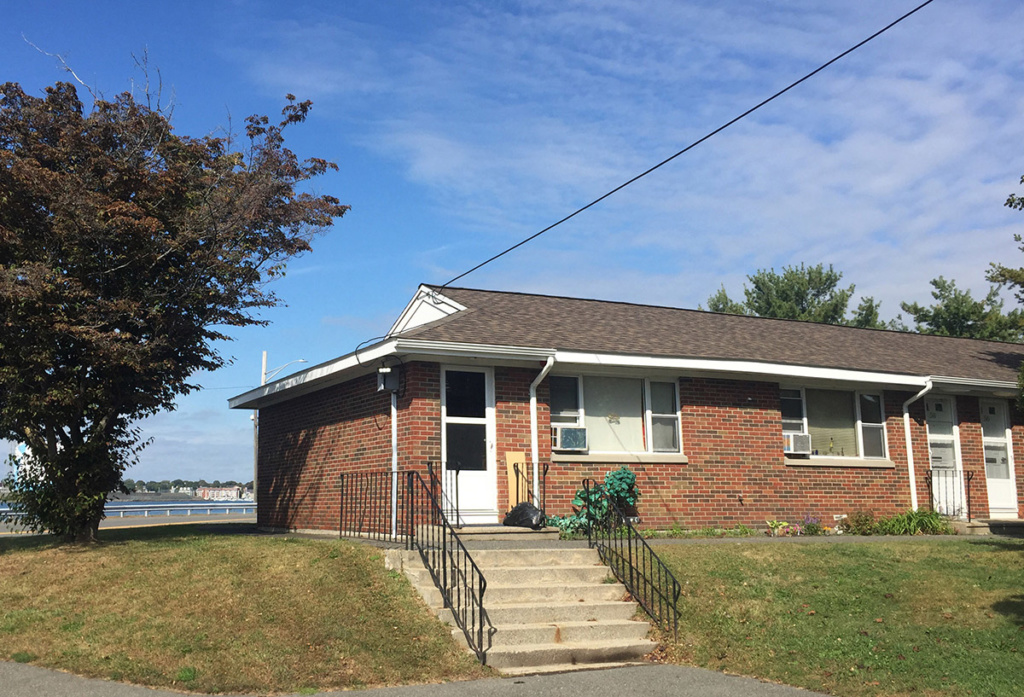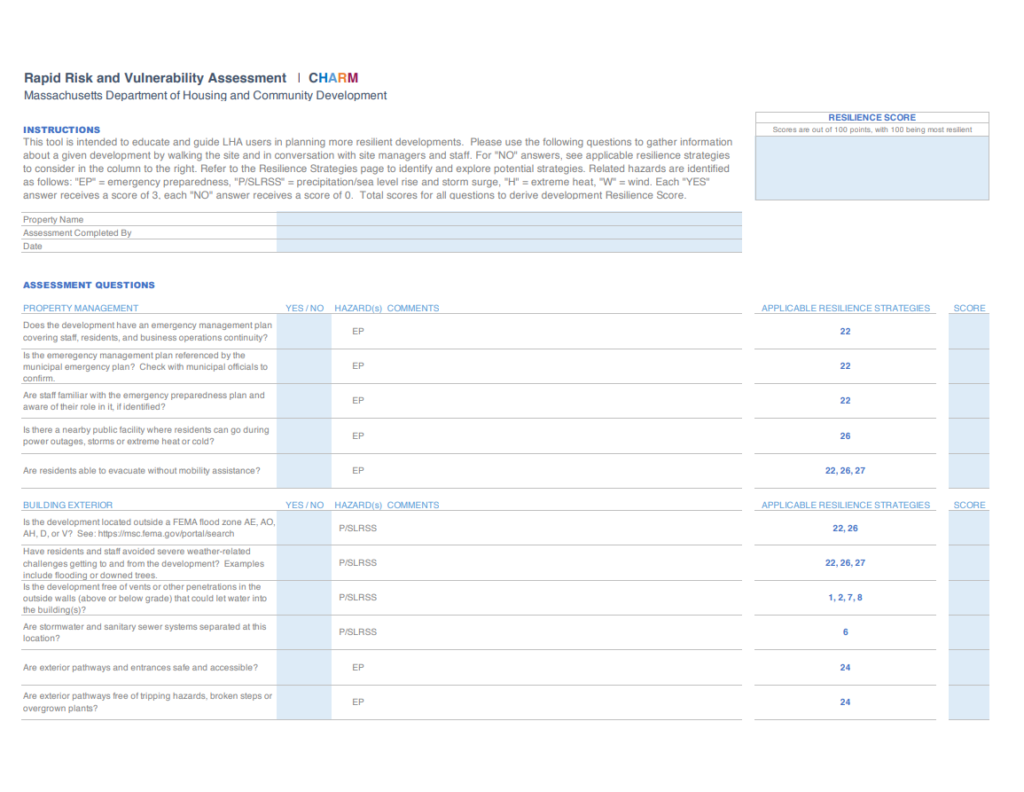
CHARM for Statewide Housing Resource
Client: MA Department of Housing & Community Development

PROJECT BACKGROUND
The Climate Hazard Adaptation and Resilience Masterplan (CHARM) project was a unique opportunity for the Massachusetts Department of Housing and Community Development (DHCD) to assess the climate risk to the public housing portfolio and residents in 240 communities, develop resilience design guidelines, and advance a strategic plan for implementation. NEI completed this work in partnership with our sub-contractor, Kleinfelder (KLF).
Affordable and public housing has deferred capital needs, limited operating resources, many-layered regulatory requirements, and low-income income residents whose vulnerability is compounded by climate-related risks. Through this project our team developed readily-deployable climate resilience tools to enable DHCD to direct capital funds and provide capacity building to local housing authorities to mitigate climate change vulnerabilities for the 80,000 residents living in DHCD-supported, locally-managed housing.

DHCD had spent the past decade investing in a capital planning toolkit, which includes a capital facilities inventory and capital planning systems and design guidelines for the portfolio that
address durability and sustainability. Our approach overlaid accessibility to new risk and vulnerability information and aligned resilient design guidance with DHCD’s existing materials.
RISK & VULNERABILITY ASSESSMENT
For the first project task the NEI team mapped exposure to existing and future climate hazards using the climate change projections and scenarios based on the Massachusetts State Hazard Mitigation and Climate Adaptation Plan (SHMCAP) adopted in September 2018. Selected climate hazards were overlaid on critical developments identified in the DHCD database to assess exposure and determine vulnerability and risk using criteria for criticality, adaptive capacity, and consequence of failure jointly developed with DHCD.
PILOT SITE ASSESSMENTS
NEI conducted pilot resilience site assessments at five representative developments by building and resident type, location, and geography to begin to provide a portfolio-wide understanding of applicable resilience strategies. Initial cost estimates for the identified adaptation measures were prepared to enable DHCD and the local housing authority directors to understand the likely added costs to their capital budgets to enhance resiliency. NEI is currently conducting seven additional site assessments for developments most at risk from sea level rise.

DESIGN & OPERATIONAL GUIDANCE FOR ADAPTATION & RESILIENCE
Our approach to the risk and vulnerability assessment portion of this project provided DHCD with the analytic capability and tools to identify and prioritize those properties most vulnerable with respect to a changing climate. Our team generated recommended system and organizational guidance that addresses resilience across the DHCD portfolio such as broader investment strategies, operations/management processes, and resources for local housing authorities. NEI delivered not just one tool or report, but a toolkit of deliverables that will be a living documents to be updated by DHCD staff as more data becomes available and to be incorporated into DHCD’s housing programs and policies over time. In this manner, the toolkit will be refreshed over time as the portfolio evolves or as new risks emerge.


